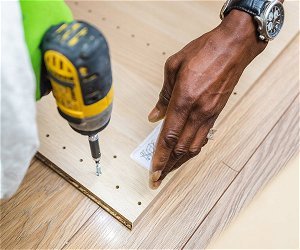Posted: Fri Feb 28, 2020 8:08am
The term "No see ums" covers a multitude of biting insects but in Spain it will generally mean sand flies of which there are numerous different types which can range in size from as little as 1mm to Mosquito size, the tiny 'Black' sandfly being the most common.
Their typical season is May to October so while March is a little early a premature appearance is more likely to be due to the unseasonably warm weather than storms
They are not fussy diners and their prime attractor is carbon dioxide which of course would normally equate to something living and breathing and a source of blood beit human or animal but I'm surprised you're complaining of them only in bed as if they are inside the house they ought to be anywhere where there is a potential food source. With a choice they will go for the easiest target and as they are very poor fliers they tend to fly close to the ground commonly that means human calves and ankles.
Obviously the best defence is to prevent them getting into the house in the first place but due to the small size that may prove quite difficult, some Mosquito screens have a weave size which they can squeeze through.
As for deterrents pesticides may work but some types of fly are resistant.
To one degree or another most anti Mosquito products should work although I would exclude cheap plug in 'ultrasonic' devices which are almost universally useless for anything.
As poor fliers they cannot fly in even mild breezes so air movement can be a deterrent.
As well as carbon dioxide they are attracted to UV light so traps are quite effective, all those you see in my photo were collected from one of those.
Probably the most effective though is a device specifically designed for the job of which there are a number on the market. These consists of a UV lamp, a carbon dioxide emitter, and a pump so they first attract them then as they come close are sucked in by the pump and dumped into a reservoir where they die of starvation.
Unfortunately such devices can be quite expensive and it may require more than one to cover separate areas, e.g. Amazon
























 My name's Alex and this is my website all about Oliva in Spain. Register now for free to talk about Gardening, plants, insects and pests in Oliva and much more!
My name's Alex and this is my website all about Oliva in Spain. Register now for free to talk about Gardening, plants, insects and pests in Oliva and much more!

















